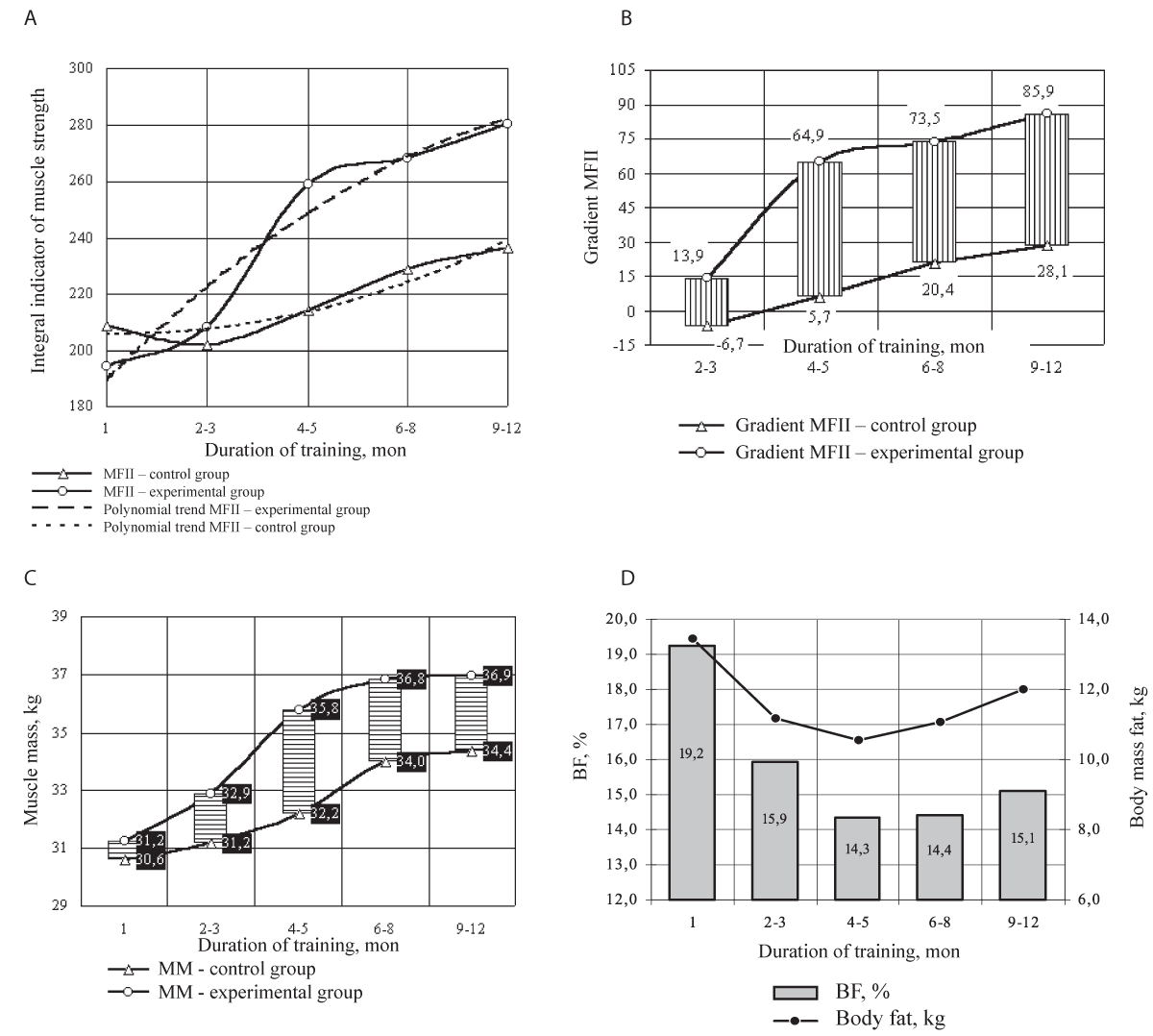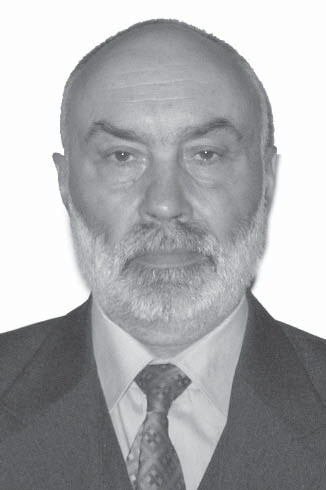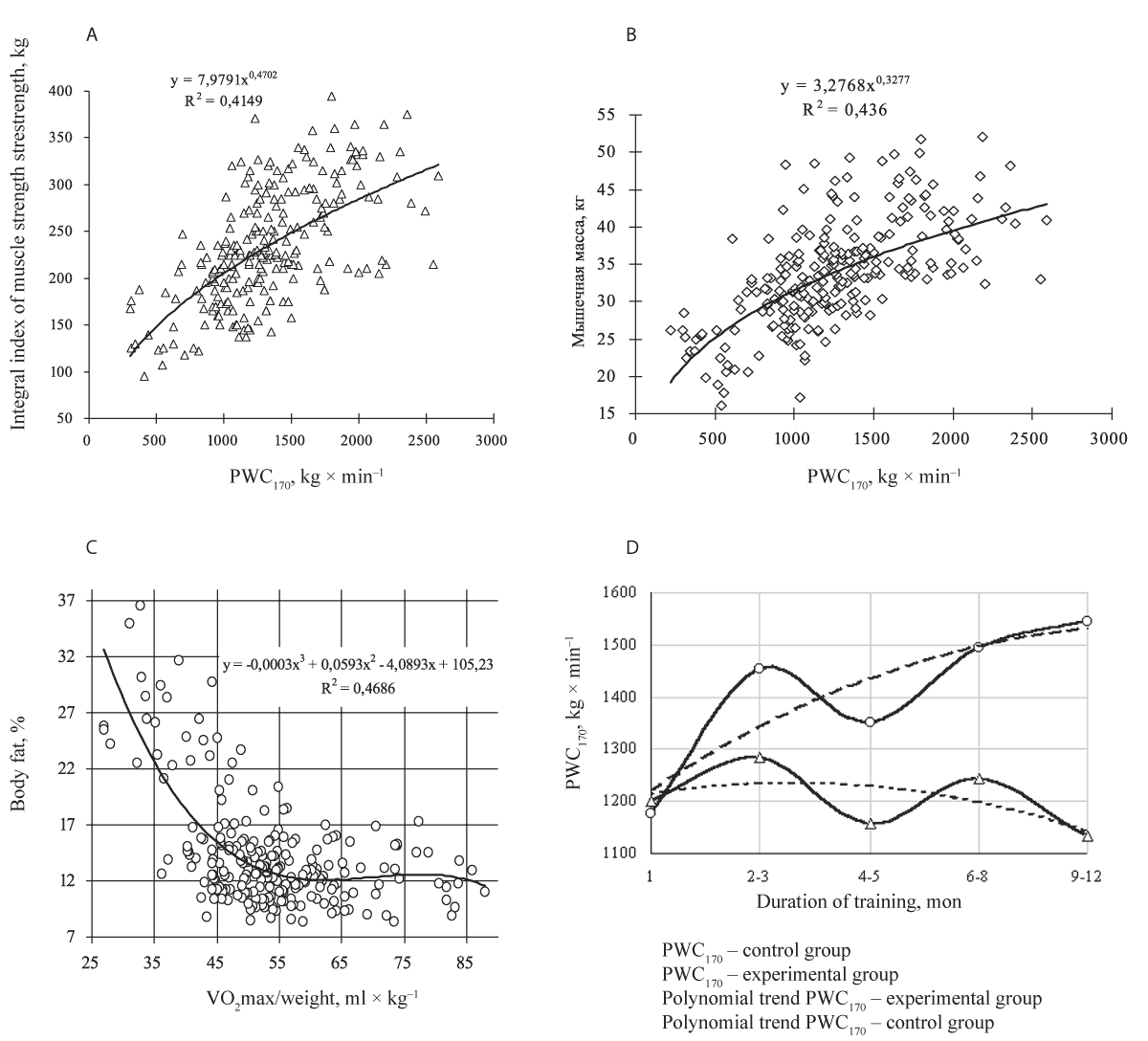Fat and muscle body mass correction using recreatve physical culture
Фотографии:
ˑ:
Today everybody knows that the external parameters of the human body are associated with his health and body fat is the "key" one in this context. Excessive body fat is generally associated with reduced functional reserves of the body. [2] The indicators of physical development and physical working capacity were proved to be interrelated [3, 5, 7, 12]. The predictive value of the anthropometric measurements when qualifying for various sports classes was proved many times. The matter of the interdependence between motility and the internals’ function along with physical development is extremely relevant too. The issue was raised by physiologists in the twentieth century and was solved in the works of M.R. Mogendovich [6], who showed the dominated role of motility in the optimization of the internals’ function. In case of a disorder in some internals, the treatment and rehabilitation is to be directed primarily to the skeletal muscles, which will stipulate for normalizing the internals’ function via the mechanism of visceral motility reflexes. Thereby, the issue of the role of muscle mass in health promotion is getting relevant.
Nowadays the number of people with decreased muscle mass is going up all over the world with more people with decreased MM and excessive body fat. All of them, who seem to have "normal" weight, have excess fat raising the risk of the metabolic syndrome [2]. It is clear that the actions aimed at normalizing such people’s health are to include a set of measures, on the one hand, to increase muscle mass and, on the other, - to reduce the amount of fat (subcutaneous and visceral). Therefore, when correcting some body components (fat, muscle mass, body proportions, etc.) it is extremely important to take into account the ratio of these components and health indicators and human kinesiological potential [5]
Despite the undeniable importance of the muscular system in the human health promotion, it is unfairly disregarded when developing individual recreation programs. Ironically, very few publications are dedicated to the correlation of health indicators with muscle mass, muscle strength, aerobic performance, although these indicators are estimated at recreational and physical training classes regardless their relations. Practically all works devoted to this issue were carried out from the purely medical point of view to the problem: the authors showed the way how specific indicators of the body composition provoke pathology in case of going beyond the empirically established standard. We have not found a single work in the available literature considering this problem in terms of valeology, namely detecting the relationships of the body components with the "amount of health", the harmony of these indicators, but not with pathology. There is a lack of recreational technologies promoting designing individual recreational programs in view of the relationships of body fat with muscle mass, physical qualities with integral, inter-system health indicators. The main reason is assumed to be the complicacy in selecting indices that correlate well with the basic health indicators.
Hence, development of individual motor programs combining the modern ideas on the role of various factors for health is especially relevant [12, 13]
Proceeding from the analysis of the popular approaches in the researches on the problem under study, as a working hypothesis we can make an assumption that considering aerobic performance in harmony with the body fat, muscle mass and muscle strength can serve a conceptual framework for development of modern physical training and recreational technologies.
Materials and methods. Overall physical working capacity was taken as an integral health indicator [7], determined using the PWC170 test [3]. Maximum oxygen consumption was calculated by Karpman V.L. et al. [3]. Muscle mass and body fat were measured by Matiegka [9], the integral indicator of muscle strength – by the triathlon total (benchpress, back squats, barbell deadlift).
The relationship of aerobic performance, muscle strength and muscle mass was studied by examining 275 men ages 17 to 25 with the 1-2 year bodybuilding experience in accordance with the D. Wider’s programs [8].
The research results were processed by means of the variance, correlation and regression analyses using the statistical software Statistica 6 (StatSoft, USA).
Results and discussion. Muscle strength was proved to be correlated (r2 = 0,42) with the level of overall (aerobic) physical working capacity (PWC170). This relationship is described by the power function - IIMS = 7,98 ´ PWC170 ´ 0,47 where IIMS is an integral indicator of muscle strength (Fig. 1, A).
The formula of the relationship of muscle strength and overall physical working capacity ensures predicting and planning individual recreational programs in view of the harmonious combination of muscle strength and overall physical working capacity, individual characteristics of body composition and functional capacity of students. The reference (predicted) values of IIMS can be determined by substituting the value of PWC170 in the formula conforming to "excellent" by Karpman V.L. et al. [3].
Fig. 1. The relationship of human muscle strength (A), muscle mass (B), body fat (C) with the level of aerobic physical working capacity. D – the dynamics of aerobic resistance in the control and the experimental groups.
Moreover, muscle mass was found to correlate with the level of aerobic physical working capacity (PWC170) (r2 = 0,436). This relationship is described by the power function - MM = 3,28 ´ PWC170 ´ 0, 328 (Fig. 1, B).
The formula of the relationship between muscle mass and the level of overall physical working capacity enables to correct training programs taking into account the harmonious development of muscle mass and aerobic physical working capacity, individualizing the correcting programs for the stipulated indicators. The reference (due) values of MM are determined by substituting in the formula the value PWC170, corresponding to an "excellent" by Karpman V.L. et al. [3].
The established body fat and aerobic physical working capacity relationship (r2 = 0,47) is described by the cubic polynomial regression equation - BF = -0,003 ´ (O2max /BM)3 + 0,0593 ´ (O2max / BM)2 + 4,089 ´ (O2max/BM) + 105,2 (Fig. 1, С).
As follows from Fig. 1, C, with fat mass in the range of> 15-17% between body fat and the O2max/BM ratio the inverse linear dependence is observed, which is confirmed by the correlation analysis (r = -0,67). The relationship of the body fat and the O2max/BM ratio in the given range is described by the linear regression equation - BF = -0,32 O2max/BM + 37,4. Then the quoted relationship (Fig. 1, C) gets curvilinear and is interrupted at the body fat level of 12% (r = -0,07, r2 = 0,04). Therefore, arguably, the interval 12% <BF <17% is the best for developing aerobic resistance and consequently - for health in general.
The optimal level of body fat for every person is calculated using this formula.
The obtained evaluation criteria for MM, BF and IIMS were tested in the experiment with 45 subjects (men) aged 14-40 in the 12-month dynamics. The subjects were divided into two groups. The first (control) one trained in accordance with the basic bodybuilding programs. [7] The second (experimental) group used the methods of strength training and correcting of body proportions similar to those in the first group, but the second part of the session included aerobic resistance programs (stationary cycling, treadmill running, rope jumping), selected by K. Cooper [4] in respect to the subjects’ functional fitness level. PWC170 was shown to increase only in the experimental group (Fig. 1, D). The differences became statistically significant in relation to the background level by the twelfth month of training (P <0.05). This index tended to decrease in the control group, as shown by the approximation curves (quadric polynomial dependences) (R2 = 0,74 and 0.52, respectively).
Fig. 2 A represents the results of the changes of the integral indicator of muscle strength for the subjects of both of the groups. IIMS incremented in both of the groups (the differences in the experimental group were statistically significant in relation to the background level after 4-5 months of training).

Fig. 2. The dynamics of the integral indicator of muscle strength in the control and experimental groups (A), the gradient of the integral indicator of muscle strength in the control and experimental groups (with IIMS calculated related to the background level) (B), lean body mass in the control and experimental groups (C) and changes in body fat percentage in the experimental group (F).
For clarity the figure shows the approximation curves (quadric polynomial dependences) of the indicator chosen with reference to the optimal statistical significance (R2 = 0,94 for the experimental group, R2 = 0,95 for bodybuilders). The IIMS growth rate was significantly higher in the experimental group (P <0,05) (Fig. 2, B).
The dynamic changes in muscle mass are presented in Fig. 2, С. Muscle mass increased in both of the groups, but the subjects of the experimental group tended to have higher rates of increase. Taking into account the research findings on the stipulated interrelation of muscle strength and muscle mass, it can be stated that the introduction of the methods of development of aerobic physical working capacity into the structure of recreational strength training amplifies the impact of the latter on the development of muscle strength and the muscle synthesis.
The dynamic changes relating to body fat in the experimental group in the course of the year are adduced in Fig. 2, D.
It can be noted that the body fat percentage related to the total body mass was reduced to the optimal amount in the first 2 to 4 months (according to the results of the personal studies adduced above) and then stabilized. Similar results were obtained in several other studies [10, 11, 13, 14]. This process is optimized quite well by combining motor modes and calorie changes and the nutrient composition of the food taken according to our method [2].
Thus, the introduction of the methods of development of aerobic physical working capacity into the structure of recreational strength training intensifies the influence of muscle strength and muscle synthesis. The timely change of the training mode using the obtained regression equations ensures purposeful correction of body proportions and composition, harmonizing these indicators with aerobic physical working capacity, and thereby optimizing the overall recreational effect.
Author’s contacts: apokin_vv@mail.ru




 Журнал "THEORY AND PRACTICE
Журнал "THEORY AND PRACTICE